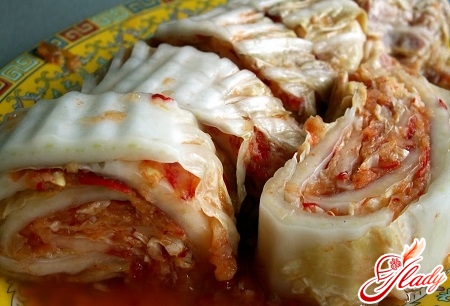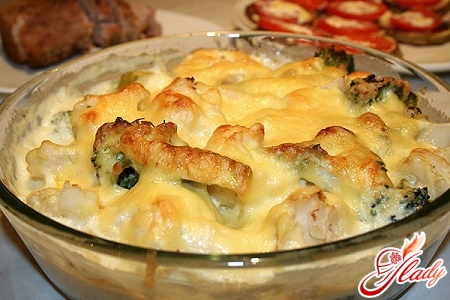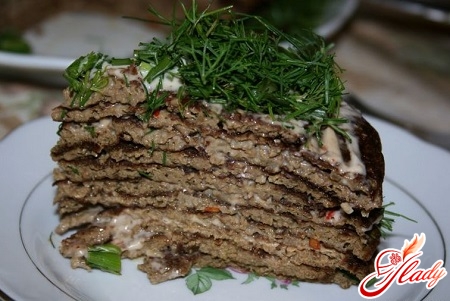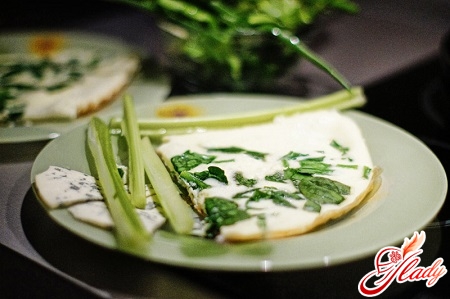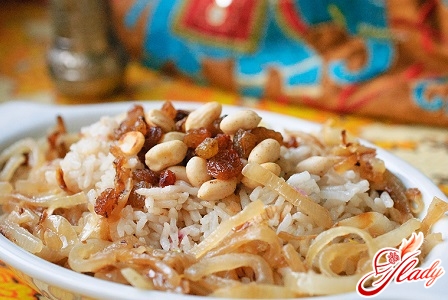
Such a popular dish today as pilaf,goes back to the prehistoric past so much that it is possible to determine at least the century of its origin very conditionally. If we assume that the most common recipe for pilaf "came" with the beginning of rice cultivation in the Middle East (II-III century BC), then in China this crop began to be grown much earlier. And yet, Chinese traditions of rice consumption have nothing in common with pilaf, especially if it is pilaf with raisins. Most likely, the birthplace of the vegetarian type is India, where the slaughter of cattle was equated to the murder of a person. And it was the Persians who brought meat into the recipe.
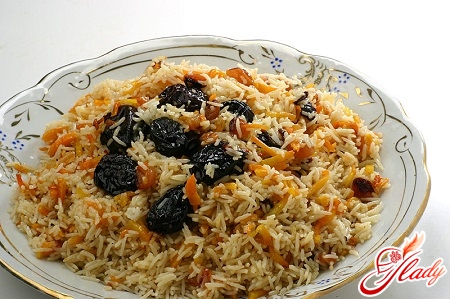
Of what is the correct pilaf
Today there are thousands of recipes for pilaf, andIt is unlikely that you will be able to determine which of them is the most correct. Judging by the name, the main ingredient of this dish is rice, since the name itself is translated as "boiled rice". Many peoples have similar names for the dish: in India - polov, in Bulgaria - pilaf, in Uzbekistan - palov. When starting to prepare a dish such as pilaf with raisins, you should understand that it is not so much important what products the recipe contains, but the cooking technology itself. Since pilaf migrated to Russia from Uzbekistan, then, according to the Uzbek recipe, it consists of two components: zirvak (a mixture of onions, carrots, meat, fruits, spices) and the rice itself. Sweet pilaf with raisins can be cooked with or without meat. Even if the dish is meat, onions are sent first to the cauldron with hot oil. Since pilaf is cooked in cottonseed vegetable oil in Uzbekistan, it is customary to throw in a small whole onion first, which is brought to blackness and absorbs the unpleasant smells of the oil. Unfortunately, sunflower oil cannot be overheated in this way. Therefore, the onion, cut into rings or half rings, is simply fried until golden brown. The color of the finished dish will depend on this. Some people prefer to fry carrots first, which is taken in about the same amount as rice. And this is also true, because this vegetable also contributes to the rich yellow color of the pilaf. Only after these two ingredients is the meat added, if the recipe initially assumes its presence. If not, then you can add spices for pilaf. Perhaps they are at home in a mixture bought in the store. However, when buying them, you should pay attention to the composition. After all, European manufacturers sometimes add something to the kit that is completely unrelated to true seasonings for pilaf. Although there is no accounting for taste.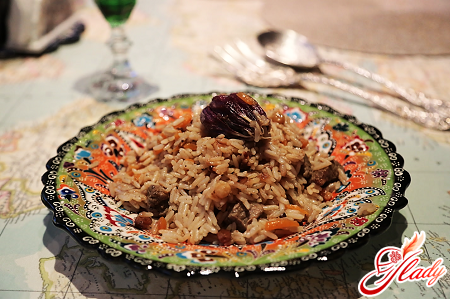
Spices for pilaf: European or Asian
Traditional eastern pilaf involvesadding cumin (zera, zry) in the form of whole grains, barberries, turmeric, cloves or whole heads of garlic. The main thing is not to overdo it with seasonings. At the same time, pre-washed raisins are added. Some recipes recommend pouring water over the sautéed ingredients and boiling for 5 minutes, but this is not necessary. When zirvak is prepared with old meat, then, naturally, it needs more time to reach readiness after preliminary frying. But pilaf without meat does not need additional cooking, because all the ingredients are cooked quickly enough. And now a blessed aroma is spreading from the zirvak saturated with spices. All that remains is to send the rice.
A little bit about the proportions: rice and water
That's where we should have started, not in the sense of the word itself.cooking, but preparation for pilaf. After all, the difference between pilaf and regular porridge is that the rice should be steamed, and not boiled until sticky. Therefore, the cereal should be thoroughly washed, the grinding "dust" should be washed off, so that the grains acquire translucency. Usually, it is enough to stir the rice under running water or change the water three times, in which the cereal should lie for 2 hours to swell. There is no need to pour hot water over the rice, it will perfectly reach the condition in 20-25 minutes after 2 hours. Although a recipe with such advice is not uncommon. Many are concerned about the proportion of rice and water. And indeed, real pilaf is distinguished by a crumbly structure, which not every housewife manages to achieve. It is better to focus not on the volume of rice, but on how much the liquid level exceeds the surface of the rice. The water should cover the cereal by only 1 cm. Experts recommend bringing the water to a boil over high heat first, and then reducing it to the lowest setting. Sometimes it seems that this liquid is not enough, because it quickly evaporates during the vigorous boiling of the pilaf. However, do not rush to add more water. It is better to pierce and slightly push apart the rice, making small indentations to the very bottom of the cauldron. After 8-10 minutes, these indentations should be leveled and made in another place. So gradually the rice will reach readiness. Yes, and stirring the pilaf is strictly prohibited. Do not rush to taste it. Even after turning off the stove, you need to wrap the cauldron with a towel along the edge of the lid, not allowing the steam to escape. Let the finished dish simmer for another 10-15 minutes - then rich, crumbly pilaf is guaranteed. The recipe for such a simple vegetarian pilaf is called Bukhara, it is laid out beautifully on a large flat dish (lyagan) in a slide and sprinkled with pomegranate seeds. Much also depends on the aesthetic appearance. Despite the fact that the dish has a sweetish taste, it is usually eaten with a radish salad. It is not forbidden to fantasize and add dried apricots or pumpkin to the raisins. Quince gives a pleasant taste. And if you also saturate the vegetarian pilaf with chickpeas, then it will be unrivaled in terms of benefits.




